Sandra Markle's Blog, page 10
October 24, 2020
ON THE BALL!
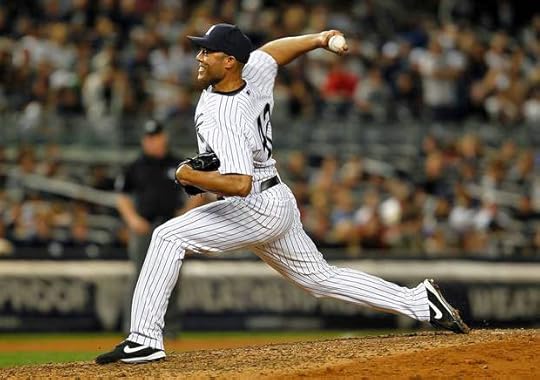
It's the WORLD SERIES! Share some baseball Discovery-FUN!
Do Cold Balls Bounce Less?
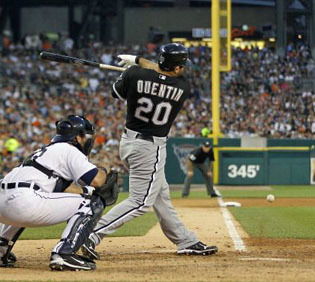
In 1965, the Detroit Tigers accused the Chicago White Sox of refrigerating the balls used by their pitchers. Should a team care if their batters are pitched ice-cold balls? You can find out.
Slip at least two baseballs into a plastic grocery sack to keep things clean and chill them in a refrigerator for an hour. While you're waiting think about how chilling changes other things, like pancake syrup or butter. Then conduct this test to find out the cold facts.
Work outdoors on a paved area or indoors on a smooth, hard surface (after checking with an adult).
Have someone hold a measuring stick straight up with the starting end of the scale on the floor. Drop the balls one at a time from the top of the stick. Be sure someone is watching closely to check exactly how high each ball bounces. Write down each ball's bounce height. Divide by the number of balls tested to find the average bounce height.
Next, spend five minutes warming up the balls using anyway you can think of to do the job safely, such as holding the balls in warm hands or even setting them on a hot water bottle.Then repeat the bounce test with the warmed balls.
Were the warm balls better bouncers?
They should be!
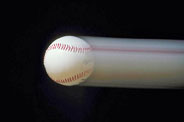
Now, here's the rest of the story.
Before this event, Major League home teams used to supply game balls to the umpire one at a time throughout the game. So the home team's pitchers could be given chilled balls. Worse, according to the White Sox, the Tigers baked the balls given to their team's pitchers. That meant the Tigers were slugging hot balls. To end the squabble, today, Major League rules require the home team to supply all the baseballs to be used during the game two hours before game time.
The Balls Have Changed--But Not Much
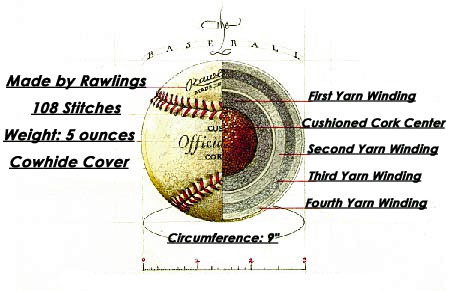 In the past 100 years, baseballs have only changed in one way. In 1974, cowhide replaced horsehide as the baseball's covering. Otherwise a baseball is exactly the same, today, as it always was.
In the past 100 years, baseballs have only changed in one way. In 1974, cowhide replaced horsehide as the baseball's covering. Otherwise a baseball is exactly the same, today, as it always was.There's a cork core inside a rubber ball surrounded by nearly a quarter mile of woolen yarn, a winding of cotton/polyester yarn and a leather jacket sealed with 108 stitches (not one more or one less).
The finished ball must weigh between 5 and 5.25 ounces (141 and 148 grams) and be between 9 and 9.25 inches (22 and 24 centimeters) around.
 This CT-scan lets you peek inside a real baseball to see its parts.Don't you love the unique way technology lets us look at things?
This CT-scan lets you peek inside a real baseball to see its parts.Don't you love the unique way technology lets us look at things?Find The Sweet Spot
 You'll need a wooden bat and a hammer (either a real hammer or a wooden mallet) for this activity. Your job is to find the one special spot on the baseball called the sweet spot.
You'll need a wooden bat and a hammer (either a real hammer or a wooden mallet) for this activity. Your job is to find the one special spot on the baseball called the sweet spot. It has that name because striking a baseball with exactly that spot on the bat will make it travel farther than striking it at any other point. That happens because striking the ball at the sweet spot causes the least amount of vibration within the wooden bat. And that means the greatest amount of energy will be transferred to the ball. So where is the sweet spot?
Have a partner grab the end of the bat's handle and let the bat hang straight down.
Use the hammer to tap the bat gently near its fat free end. Then repeat tapping the bat gently at points closer and closer to the handle.
Usually striking the bat at the sweet spot will produce a slightly different sound. The person holding the bat should also feel less vibrations when the bat is struck at the sweet spot.

To be precise, measure about six inches (15 centimeters) up from the fat end of the bat. That's where the sweet spot is usually located.
When a Major League player strikes the ball at that
spot, it's not uncommon for the ball to leave the bat
traveling 100 miles (160 kilometers) per hour.
In the past, Major League ballplayers tried to make balls travel farther by swinging heavy bats. Here's a photo of Babe Ruth at bat. The Home Run King regularly used a 42 ounce (1,190-gram) bat. Sometimes, he even used one that weighed 52 ounces (1,474 grams).
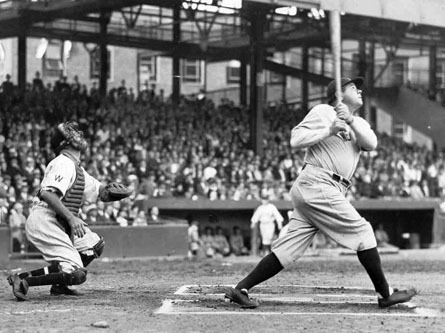
Today, players have decided they can knock balls farther by swinging faster. So they are opting to use lighter bats--ones weighing 32 or even 28 ounces (907 or 793 grams).
You might be interested in knowing that in the very early days of baseball, players were given four strikes before they struck out.
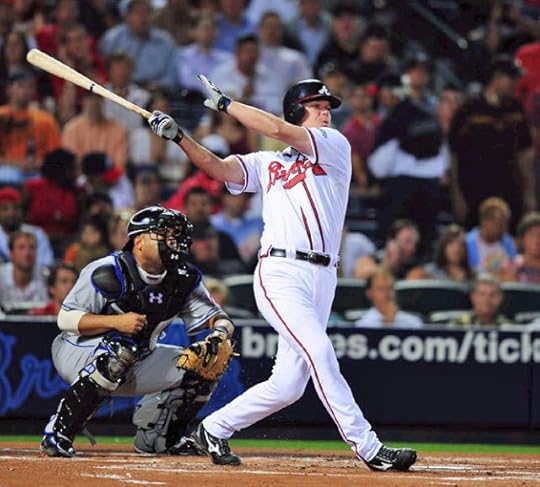
October 18, 2020
TAKE A BREAK! I'll READ TO YOU
Ready for a story? Get comfortable.
I'm about to read....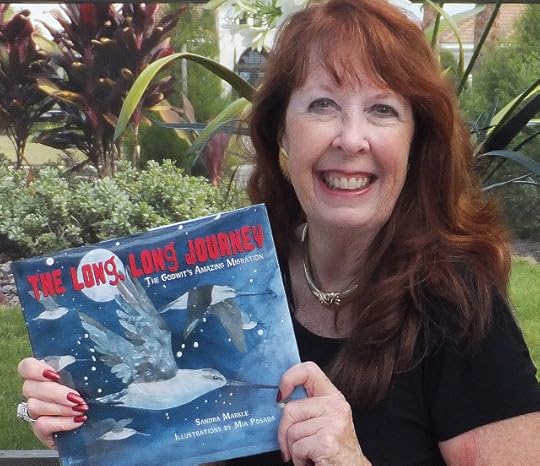
The Long, Long Journey (with permission from Lerner Publishing).
Hurry. I'm ready to go. Click to start.
I loved sharing our TAKE A BREAK! story. What was your favorite part?
Till next TAKE A BREAK!
October 6, 2020
HAPPY DINOSAUR MONTH!

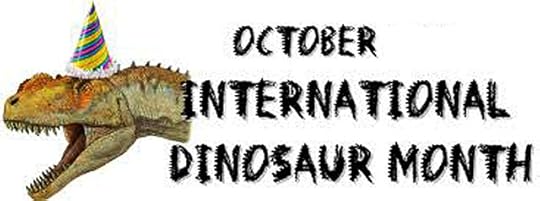
Do you have a favorite dinosaur? The most popular by far is the one on the cover of my book. My favorite dinosaur is on pages 8-9.
September 26, 2020
A REAL Computer Adventure!
 J Presper Eckert in front of UNIVAC
J Presper Eckert in front of UNIVACOne wonderfully, special part of my writing career has been the awesome people it has let me meet. I will never forget Bell Labs flying me to Pennsylvania to have lunch with J. Presper Eckert, one of the early computer inventors. He was key in working on UNIVAC.
That was a dinosaur of a computer. It took up a large room which had to be kept cool so UNIVAC didn't overheat. Plus, the computer needed a big team of workers to tend its many parts and keep it operating.

One of the stories J. Presper Eckert shared with me was being in charge of UNIVAC predicting the outcome of the 1952 Presidential Election. That was the election that pitted General Dwight D. Eisenhower against Illinois Governor Adlai Stevenson. The press and polls all favored Stevenson. UNIVAC would be shown on CBS during the lengthy reporting of incoming state results. It was hoped, though seriously doubted, that the computer could predict the election outcome ahead of the West Coast polls closing.
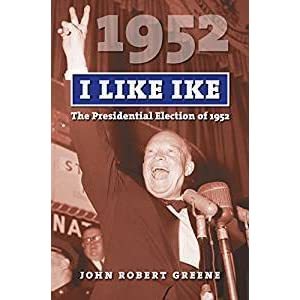
There was a lot of pressure to have UNIVAC accomplish this never-bef0re-tried task. It was viewed as possibly turning the public's view to believing computers could be worth companies and government agencies investing in them. Remember, back in 1952 no one had an iPad, a laptop, or even a cell phone.
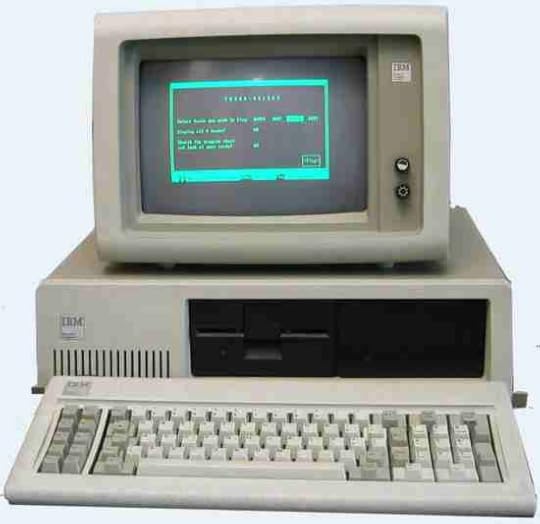
In fact, I have to admit that when I interviewed J. Presper Eckert I was just beginning to work on a home computer, which took up half my desk and required me to use special codes to make it indent and capitalize. Text was green and I couldn't imagine color or pictures being on my screen. This was even before I wrote my first book about computers and kids creating their own computer programs.
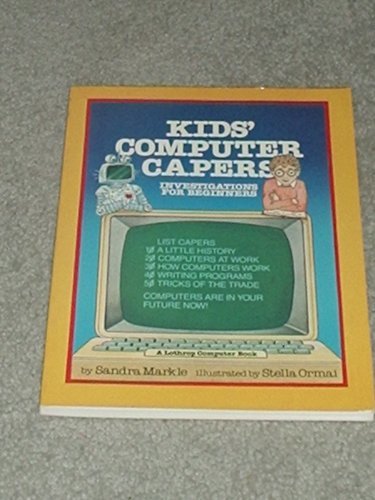
Back to my story.....
The next part never seems to be reported in historical accounts. But it's key. Eckert explained that for UNIVAC to be able to make a prediction for the Presidential Election it needed data for comparison. So Eckert had his team collect what he called "Bellwether" data on past results from across the US. Something is called Bellwether if it shows what tends to lead a trend. In other words, UNIVAC was given a LOT of past election results it would then be able to compare against incoming data on Election Night. It's goal--LOOK FOR A TREND.
 Eckert standing next to Cronkite looking at computer results which were, at the time, only viewed as printouts.
Eckert standing next to Cronkite looking at computer results which were, at the time, only viewed as printouts.OK, the big night came. The famous news reporter Walter Cronkite was there. So was J. Presper Eckert. The data on polls reporting votes from each state came in and was entered into UNIVAC. The computer churned away--actually it was a matter of LOTS of parts called transistors switching on and off. Then the moment came.
IMAGINE A DRUM ROLL!!!
Before the polls were even closed on the West Coast, UNIVAC reported Eisenhower would have 483 electoral votes and Stevenson only 93.
Someone from the CBS news team took Eckert aside and said basically, "NO WAY! Impossible. Try again."
Eckert told me he was really sweating and nervous. He didn't want to let his company down by having UNIVAC fail and show computers really couldn't be counted on. He had his team try again. AND this time the results were....THE SAME! But CBS would not report UNIVAC's results and predict an Eisenhower win.
However, when the night was over and all the results from across the US were in--all the votes were counted--the results proved UNIVAC was right. Well, overall. The actual final number of electoral college votes was Eisenhower 442 and Stevenson 89.
Dwight Eisenhower was President.

Because of UNIVAC's success, computers became trusted data processors worldwide. Computers have, in fact, been counted on to predict the outcome of every presidential race since.
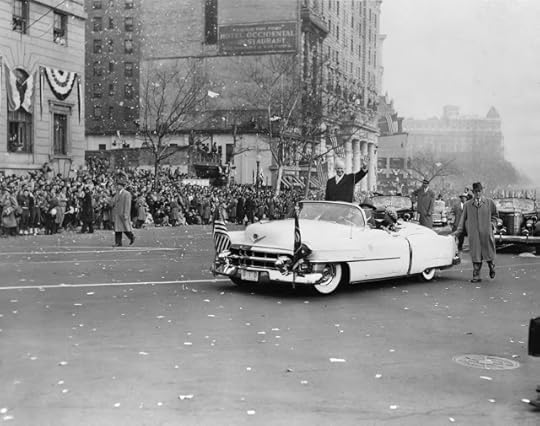
NOW, when you're watching reports of this year's computer prediction of the Presidential Election results, pause for just a moment. Remember UNIVAC, the computer that did it first, and wasn't trusted to be right.
September 18, 2020
FUN TO THE CORE!
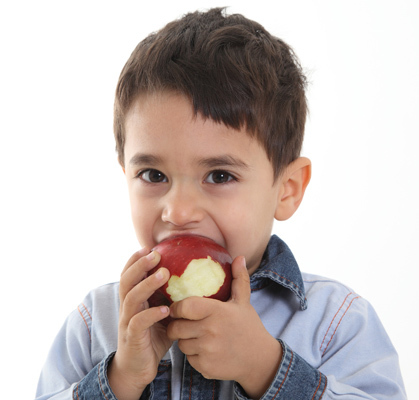
There are thousands of kinds of apples. However, only the most popular are grown and harvested. Here are the top ten.
Pink Lady HoneycrispFujiGolden DeliciousMcIntoshCox's Orange PippinRed DeliciousGalaJonasgoldCortland
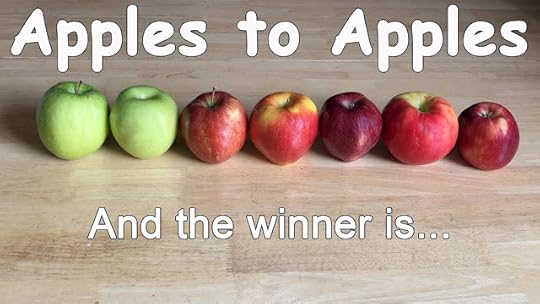
Collect any three and compare. Do the apples look different?
Check color.
Shape.
Size.
Now wash and slice. Then taste one sample. Rate it from 1 to 4 on crispness with 1 being the softest and 4 being the crispest.
Also rate it on sweetness with 1 being the least sweet and 4 being the sweetest.

Have a swig of water. Next, repeat these two tests with the second apple. Then with the third.
Now create an advertisement for your favorite kind of apple. Tell why that's the best kind to buy, eat, and enjoy. Share something that will make people who've never tasted that kind of apple really want to try it.
If you can, share your findings on sweet taste with at least five friends and build a bar graph to compare the kinds of apples.
It's estimated that each person in the United States eats about 50 apples a year. So while your investigating, you'll be on your way to eating your fair share of this year's crop.
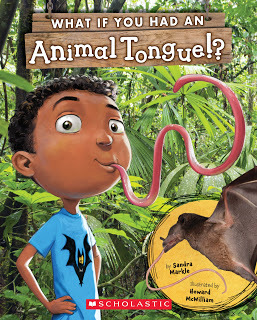
Your tongue is what let you taste the apples you tested. Don't miss finding out about some super cool animal tongues.
SHRINK A HEAD
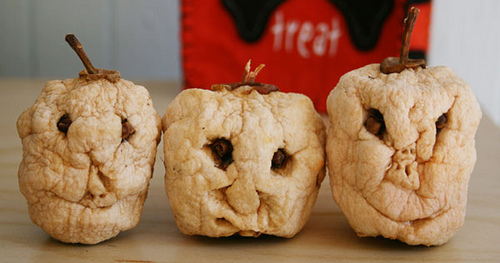
In pioneering times, apples were carved and allowed to shrink and dry to make heads for dolls. You can make an apple head doll too. Just follow the easy steps.
1. First, peel the apple. Leave some peel on top for "hair".
2. Plan what you want the face to look like.
3. Pour 4 cups of water into a bowl and stir in a teaspoon of salt. Place the carved apple in this for about two hours.
That soften's the apple's flesh.
4. Next, use an unsharpened pencil or a popsicle stick to push in eye sockets. Also carve the shape for a nose and mouth.
5. Push raisins into the eye sockets for eyes. You may also want to poke unpopped popcorn kernels into the mouth for teeth.
6. Set your complete apple head on a plate. Check daily to see how the face changes as the apple dries.
The dried apple head usually won't mold. That's why people used to preserve food, like apples, for winter by drying it. The lower water content helps prevent bacteria and mold growth.
Now, create a doll body for your apple head. It could be made out of poster board. It could be made out of paint stirring stick and have cloth clothes. Or something else. Whatever you make, make a list of the steps to follow. That way, others can make an apple head doll just the way you did.
MORE FUN!
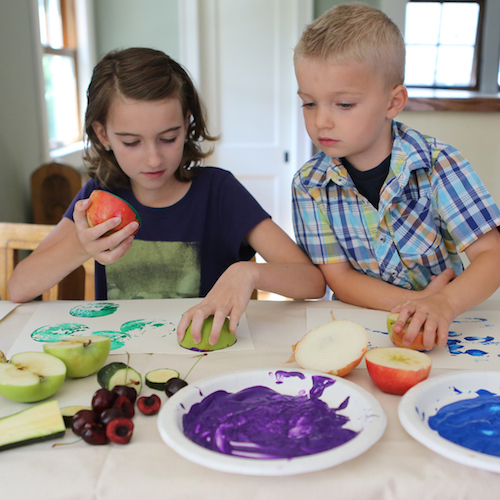
Cut and StampApples make great print blocks. Cut a nice firm apple in half. Use a sturdy plastic knife or popsicle stick to cut away parts of flesh. Pour tempera or finger paint on a sturdy paper plate. Touch the cut apple to this to coat. Then press firmly on paper. Repeat to "stamp" your design all over the paper. If you want more than one color, wash off the apple and pat dry with a paper towel. Then keep on stamping with a new color of paint.
Johnny Did ItLook up Johnny Appleseed on-line. Then make up a short play about his real life (at least what people think may be real). Or let children work together to make up a short play about something that Johnny Appleseed could have done--maybe even in your home town. Then invite visitors to see them act out this play.
September 4, 2020
NATIONAL WILDLIFE DAY!
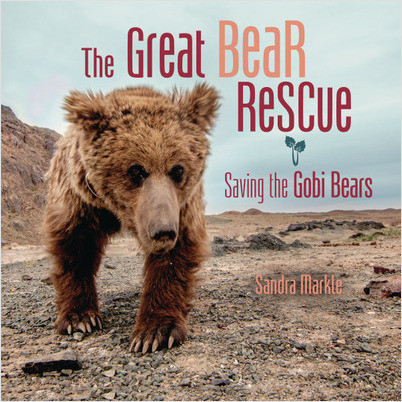
It's National Wildlife Day--perfect day to share my newest book THE GREAT BEAR RESCUE! (Lerner Publishing).
Did you know there is a bear that lives entirely in a desert?
Did you know there is a bear whose population is fewer than 40 total--and only 8 of those are females?
I absolutely guarantee you will fall in love with Gobi bears. I did! Plus this is the story of the awesome effort scientists are making to learn about Gobi bears to try and help them survive.
So, please join me in thinking of this as NATIONAL WILDLIFE/ SAVE THE GOBI BEARS DAY!
August 31, 2020
BUTTERFLY MEMORIES---FLY AWAY WITH ME!
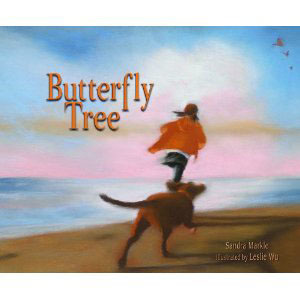 The best memories are the times we share. So I developed these activities for children to enjoy while reading my book, Butterfly Tree (Peachtree Publishers, 2011).
The best memories are the times we share. So I developed these activities for children to enjoy while reading my book, Butterfly Tree (Peachtree Publishers, 2011).First, the heart of this book is about making a memory—taking time to do something together you can remember sharing forever. Talk about and then write about a special time you remember sharing with someone.
*Where and when did it happen?
*What happened?
*What was the key moment of that shared time?
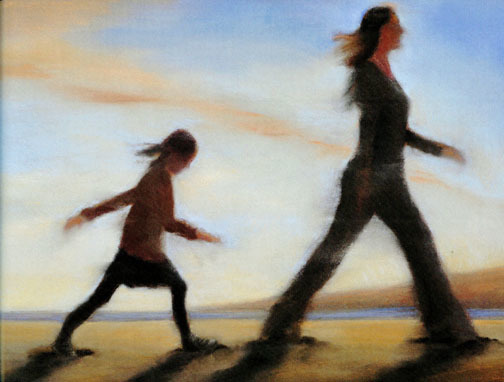
Of course, there are also places we’d like to go and things we’d like to do to make memories. Talk about and then write about something you’d like to share doing together.
Now, explore the special memory Jilly and her mother share in Butterfly Tree.

When Jilly first spots something strange in the sky out over Lake Erie, what does she think it looks like? Read and discover.
Describing what something looks like by comparing it to something else is called a metaphor. Basically, something unfamiliar is described by telling how it’s like something familiar. A metaphor can be a powerful way to use words to paint a picture in someone’s mind. Try it.
Sit quietly for a few minutes either indoors or outside. Look around. Pick out something to focus on. Then think how you could describe what it looks like to someone who’s never seen it by comparing it to something else--something familiar.
Next, share your metaphor. Ask the person to describe the visual image your words painted in their mind. Trade metaphors back and forth to work together building a description.
Here are some places and times you could use metaphors to partner building a description others can enjoy too.
*A sunset
*A stormy day
*An animal in action: a bird taking flight; a squirrel in a tree; a cat playing
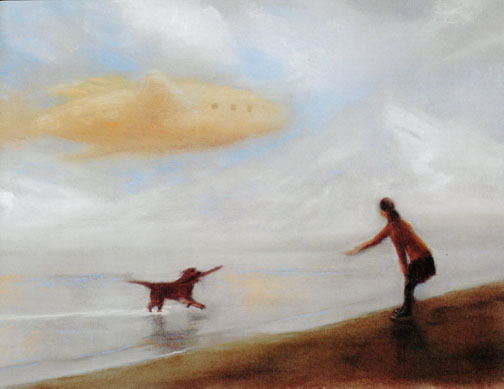
When Jilly first sees the orange cloud in the sky, she makes lots of guesses of what it might be.
Each of those guesses probably instantly made Jilly think of a different possibility for where the cloud came from and why it’s over Lake Erie. What did Jilly imagine the cloud might be? Read and discover.
Spend some time cloud watching with someone. Look out a window or go outside on a wonderfully cloudy day. Focus on one cloud that looks like an animal, an object, or something totally magical. Tell a short story about that cloud and what you imagined about it.
Then write your cloud story. Be sure to include at least one metaphor to help your reader see what you’re describing.
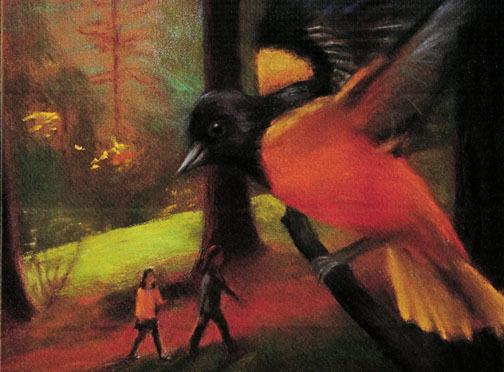
Jilly’s ready to run away because of the orange cloud she’s spotted, but her Mom suggests they go searching for where the cloud landed.
What orange things do Jilly and her Mom discover in the woods before they find the orange cloud? Read and discover.
What happens to reveal what the orange cloud really is? Don't miss reading to find out!

Mom says she remembers seeing the butterflies when she was a girl.
Why do you think she didn’t just tell Jilly what the orange cloud was?
Here's wishing you a Wonderful Butterfly Tree memory moment to remember too!
August 19, 2020
WHAT COLOR IS HAPPY?

If you can pick any color, what color means HAPPY to you?
This is the perfect month to decide because
AUGUST IS....
NATIONAL CRAYON COLLECTION MONTH! Once you decide which color is your "Happy Color", call it that from now on. And use it to do each of these fun, ways to be creative.
1. Make an entire picture of anything--your pet, your home, your family, ANYTHING--just using that color. But use it lightly, brightly, in dots, and stripes.
2. Write a 1 paragraph story that uses the word "HAPPY" a lot. Only instead of the word put a big splotch of that color. Just see how HAPPY that story makes you!
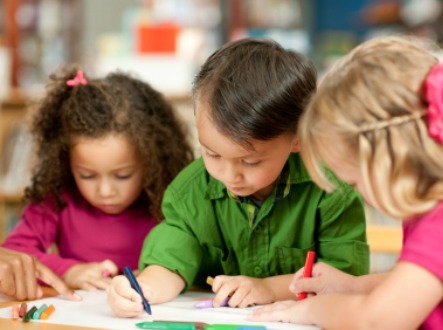
Being National Crayon Collection Month, August is the perfect time to share several of my favorite children's books that star crayons.Of course, I have to include the story of Crayola Crayons' Invention. The Crayon Man (Natascha Biebow/HMH Books for young readers, 2019)
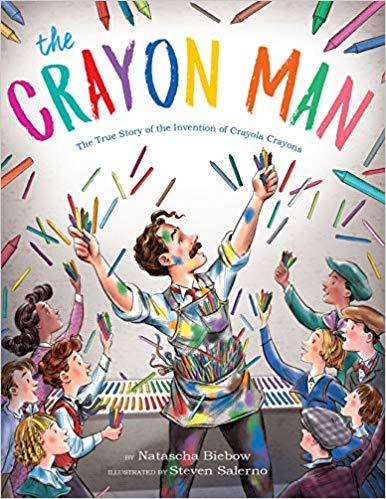
Red: A Crayon's Story (Michael Hall/Greenwillow Books, 2015)
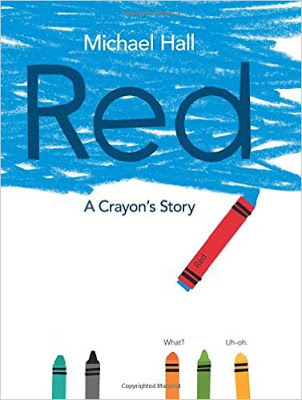
Red has a bright red label, but he is, in fact, blue. His teacher tries to help him be red (let's draw strawberries!), his mother tries to help him be red by sending him out on a playdate with a yellow classmate (go draw a nice orange!), and the scissors try to help him be red by snipping his label so that he has room to breathe. But Red is miserable. He just can't be red, no matter how hard he tries! Finally, a brand-new friend offers a brand-new perspective, and Red discovers what readers have known all along. He's blue! This funny, heartwarming, colorful picture book about finding the courage to be true to your inner self can be read on multiple levels, and it offers something for everyone.
The Day The Crayons Quit (Drew Daywalt/Philomela Books, 2013)
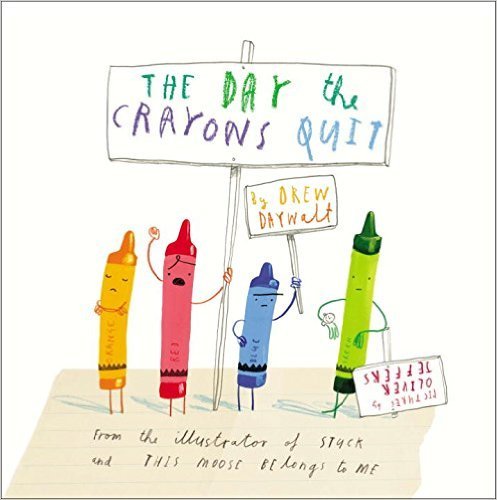
Poor Duncan just wants to color. But when he opens his box of crayons, he finds only letters, all saying the same thing: His crayons have had enough! They quit! Beige Crayon is tired of playing second fiddle to Brown Crayon. Black wants to be used for more than just outlining. Blue needs a break from coloring all those bodies of water. And Orange and Yellow are no longer speaking—each believes he is the true color of the sun.
What can Duncan possibly do to appease all of the crayons and get them back to doing what they do best?
Now make up a fun short story about crayons having an adventure!
Who will be the star? Your HAPPY, of course!
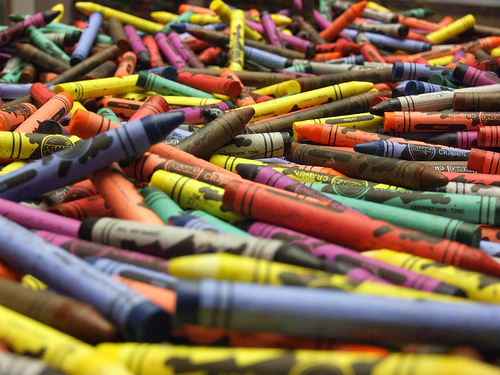
August 5, 2020
ARE YOU A MARKLE'S BOOK EXPLORER?
ARE YOU A Markle's Book Explorer?
If not, WHY NOT!?
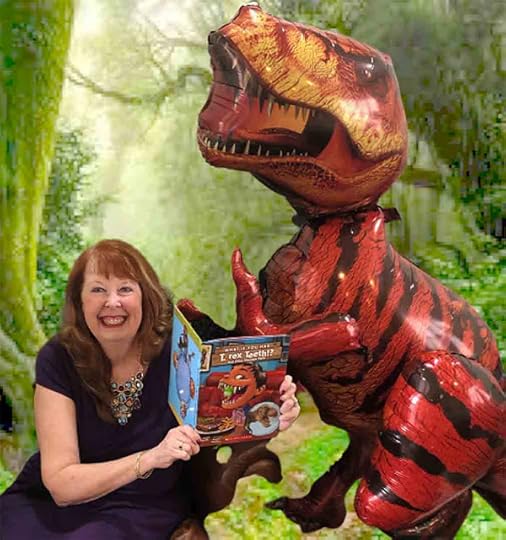
This is year 4 for Markle's Book Explorers.You'll be joining LOTS of teachers and LOTS of librarians in 35 states who are already enjoying MONTHLY FREEBIES:
Every month, August through May, members receive a personal email from me along with FREE, ready-to-go STEAM activities.There are also opportunities to win autographed books and other goodies.
Plus, MBE members are welcome to send me questions from students. I ALWAYS ANSWER!
So, if you're not already a
Markle's Book Explorer, DON'T MISS OUT ANY LONGER
Sign up now!
Use my Blog's comment feature to leave your name, School Name and Address, and email address.
Or email sandramarkle@yahoo.com and share that info. Then you'll be READY FOR FUN!? And FREEBIES And MORE!!!
You'll LOVE IT!
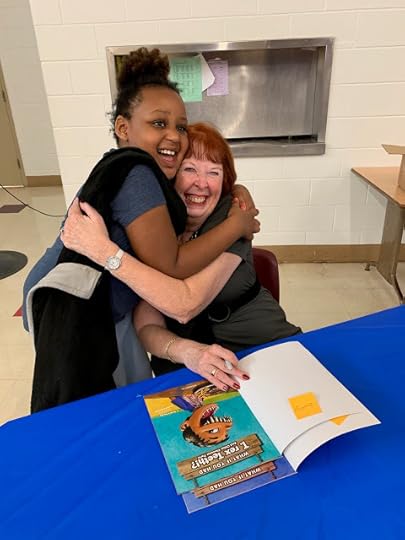
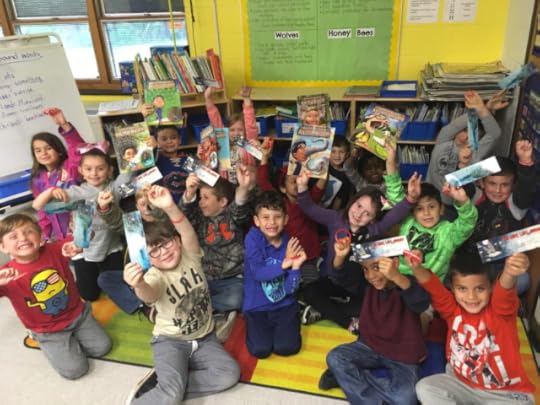
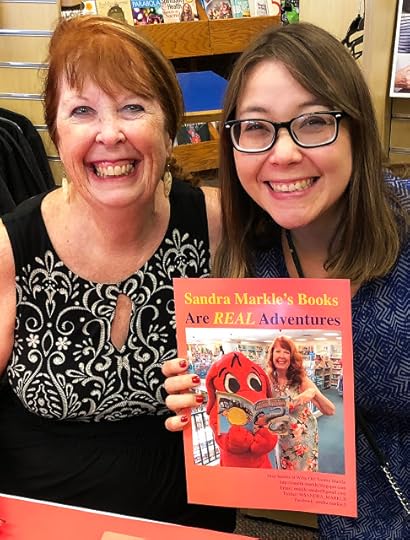
August 4, 2020
SHARK WEEK FUN!
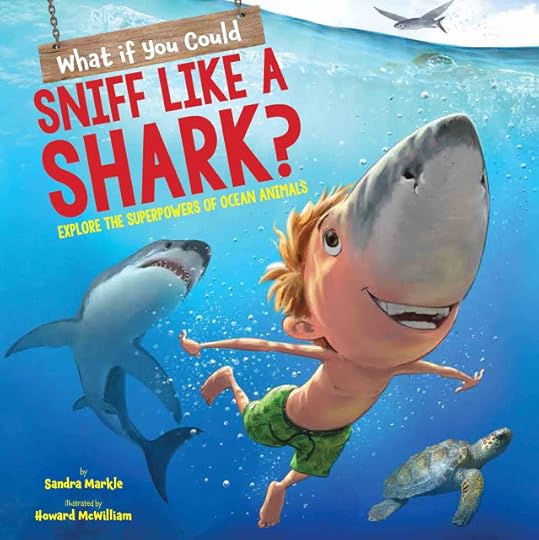 Scholastic, 2020
Scholastic, 2020Sharks are so cool I've written 6 books about them.
Dive in with me to share some sharky- FUN!
BIGGEST! LITTLEST! True Or False?
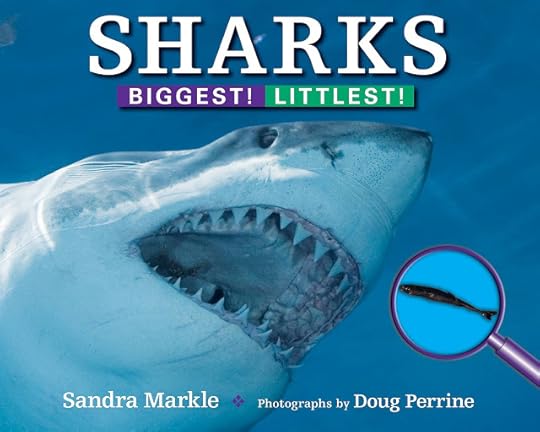 Boyds Mills Press, 2008
Boyds Mills Press, 2008You decide. Then peek at the tiny print to see the correct answer.
A Cookie-Cutter Shark is one of the biggest kinds of sharks. T Or F?
F It's just 18 inches long. It's so small other bigger fish don't see it until too late. It bites and spins around. Its sharp teeth slice out a cookie-shaped bite from its prey.
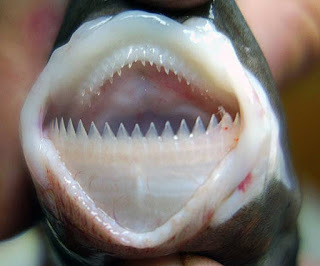

A Whale Shark is the biggest kind of shark which lets it catch and eat big whales. T Or F?
F This biggest kind of shark only eats tiny fish and plankton, tiny animals drifting near the ocean's surface. It has a 4 foot wide mouth and about 3,000 teeth but its throat is as small around as a softball.
No matter its size, a shark's body is covvered with little tooth-like scales. T Or F?
T Called denticles, these grow out of the shark's skin. Like teeth, each has a hard enamel coat and soft center pulp. They are a protective covering and help the shark slip easily through the water.

What Do You Think Happened!?
 Lerner, 2020
Lerner, 2020Read this opening story from The Great Shark Rescue. Then write your own ending....
TRAPPED!!!!
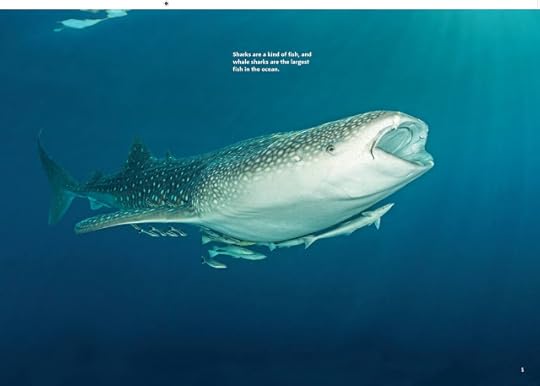
With its huge mouth open, a whale shark swims slowly near the surface close to Mafia Island off the coast of Tanzania. The 16-foot long giant is feeding on lots of tiny, shrimplike krill and a few little fish.
All at once, a big net blocks its way. The whale shark dives and turns, trying to swim under or around the net. But the giant fishing net is everywhere.
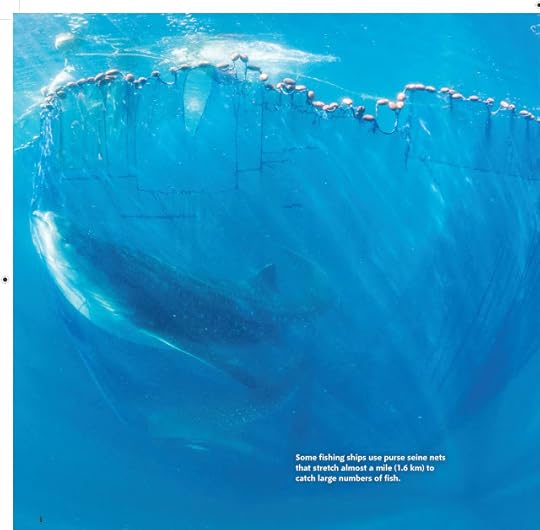
The young whale shark is caught! TRAPPED!
Will your story have a happy ending with the whale shark escaping on its own?
Will your story have someone arrive to free the whale shark giving it a happy ending?
Or will something else happen?
START SNIFFING!The Great White Shark is featured in WHAT IF YOU COULD SNIFF LIKE A SHARK?
Here's an example of how it would help you to have a great smell-sniffer, like a Great White Shark.
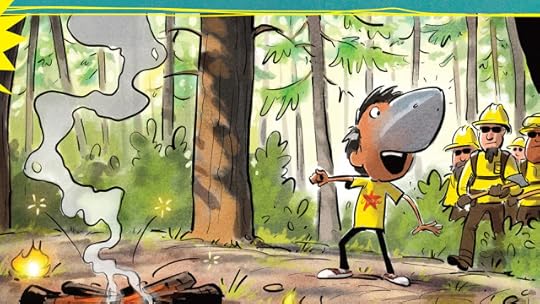
But can you think of at least 3 examples of when you would happier not to have a good sense of smell!?
And here are my other 3 books about sharks. Have fun exploring these too!
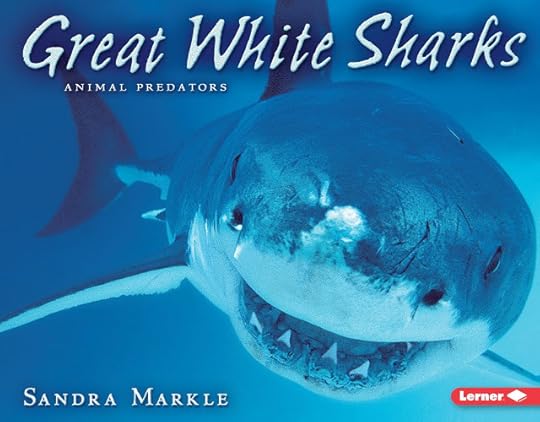 Lerner, 2004
Lerner, 2004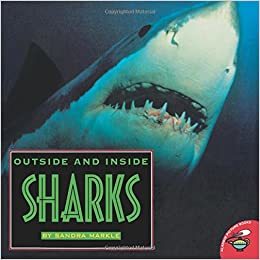 Atheneum, 1996
Atheneum, 1996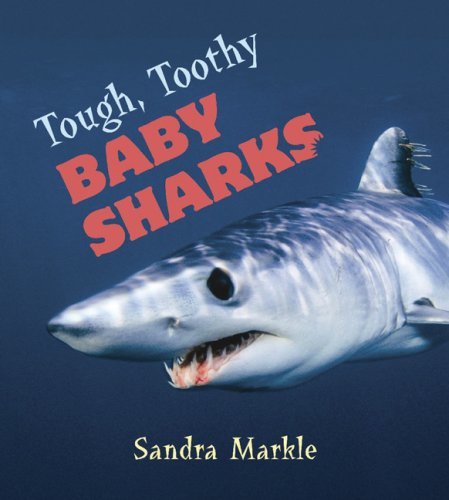 Walker, 2007
Walker, 2007WHO KNOWS what cool book I'll think of to write next about sharks!?




